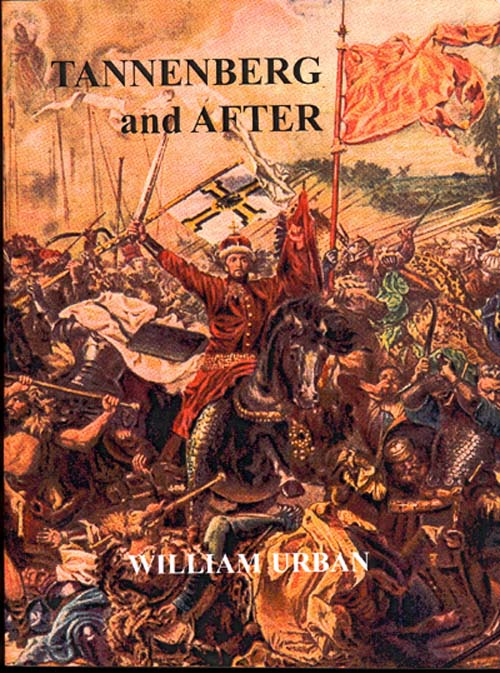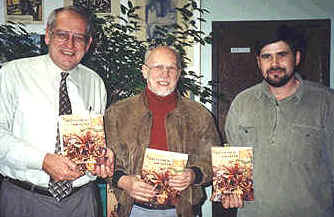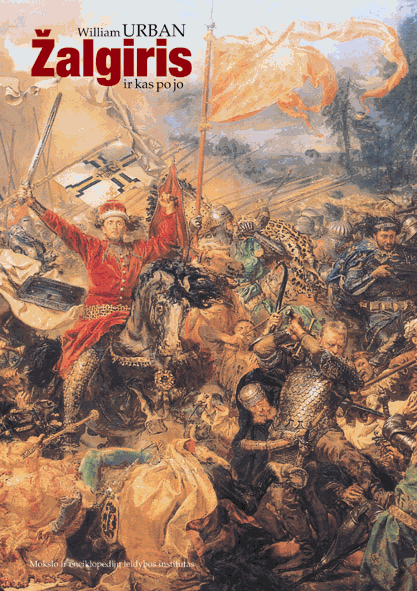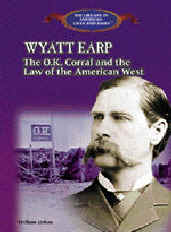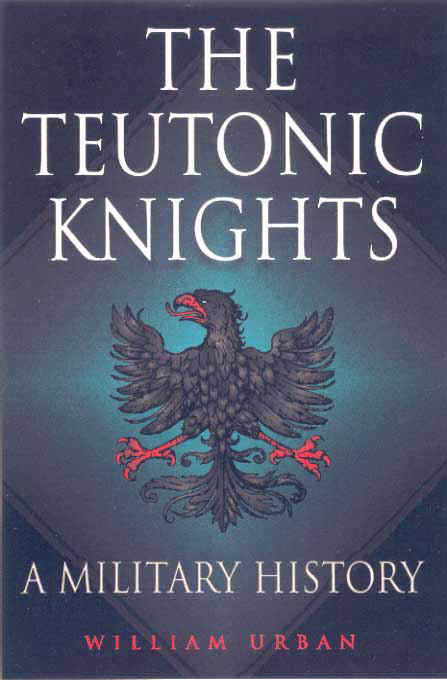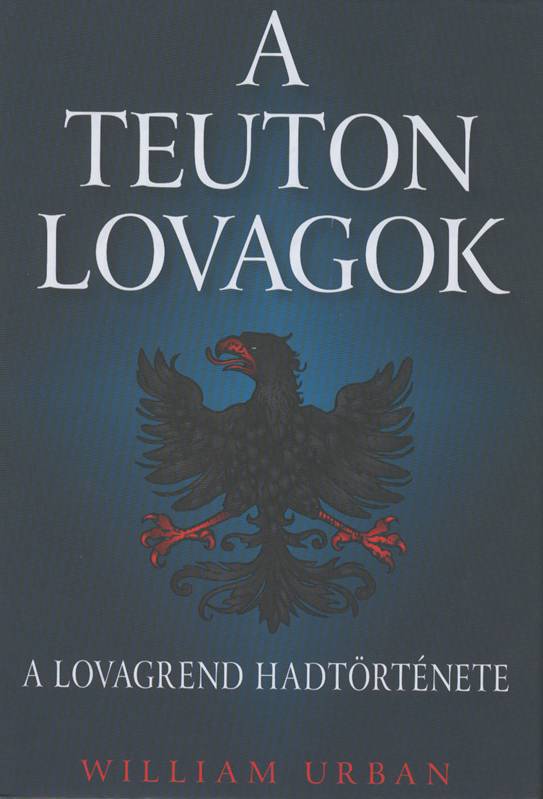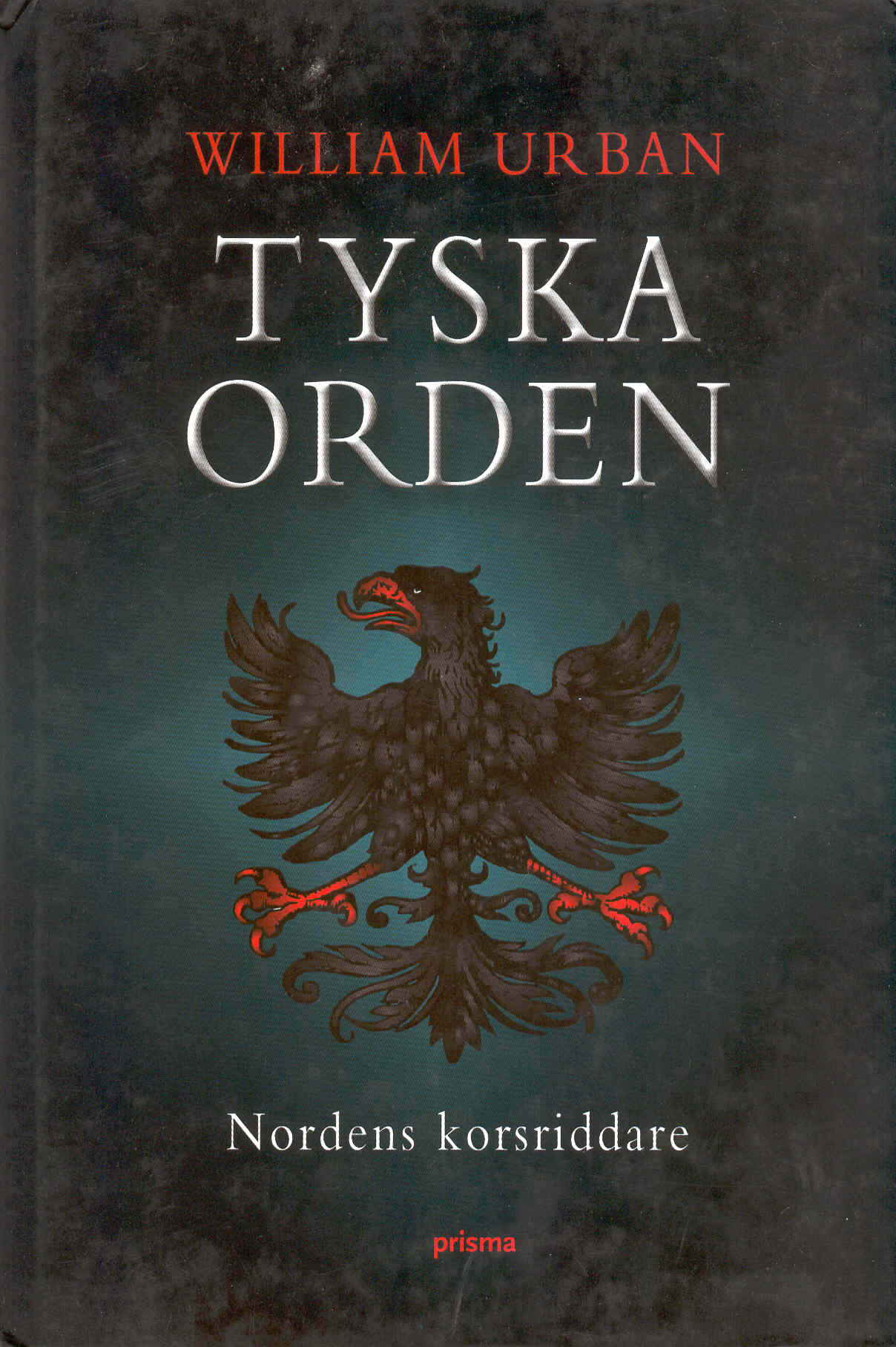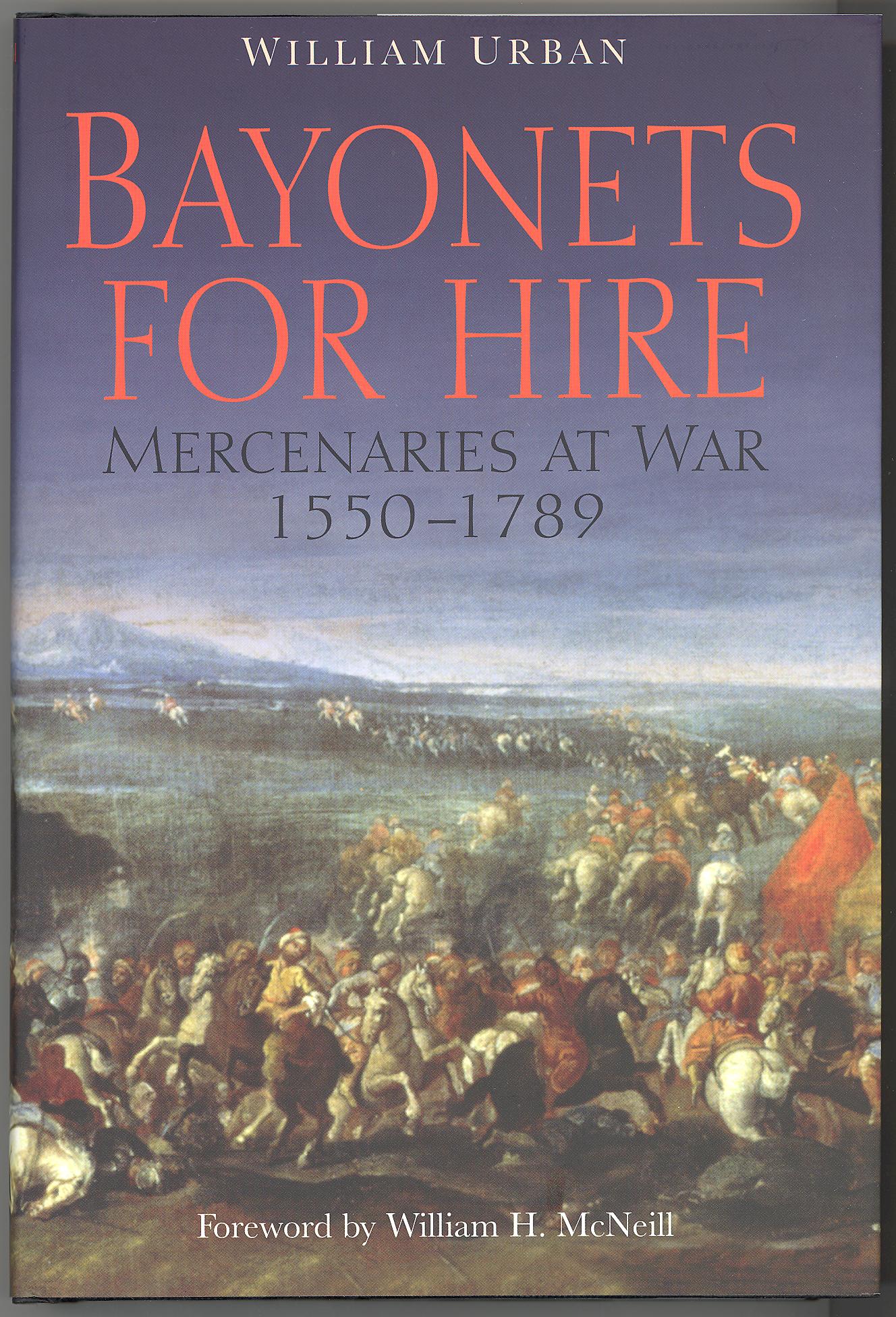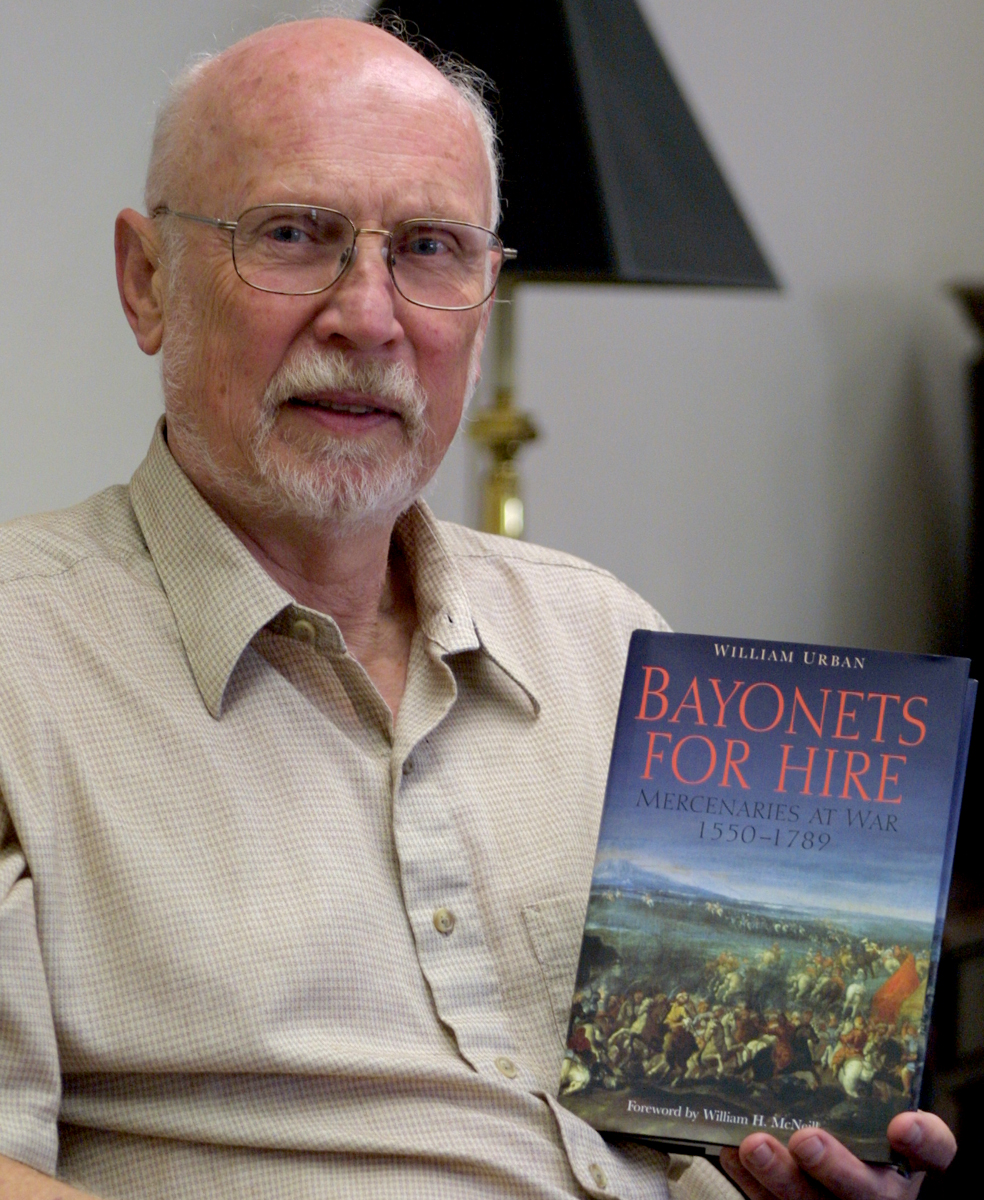Juvenal-Juvenall-Juvenile: a family history. Danville, Illinois: Interstate, 1972. Out-of-print. [This began as a little project, but once I discovered that all Americans bearing this name trace their ancestors back to one Huguenot powdered wig manufacturer who fled to Philadelphia from the religious wars of late 17th century France, it led me as far as the American civil war and cattle droving. I intend to work on a new edition, starting in the fall of 2006. Contributions and updates are welcome.]

The Baltic Crusade is the story of the 13th century German and Scandinavian crusades to Livonia (modern Estonia, Latvia, Lithuania and Finland)
The Baltic Crusade. DeKalb, Illinois: Northern Illinois University Press, 1975. 2nd edition, revised and enlarged. Chicago: Lithuanian Research and Studies Center, 1994.
A selection from the preface to the 2nd edition.
Not yet out of print. Ignore what Amazon.com says. See publisher's website.
Also, this is html format. The print in the book looks normal.
IT HAS COME TO MY ATTENTION THAT NUMEROUS LIBRARIES STILL HAVE ONLY THE FIRST EDITION. SO MANY CHANGES HAVE BEEN MADE IN THIS AND OTHER EDITIONS OF MY BOOKS ON MEDIEVAL BALTIC HISTORY THAT THESE LIBRARIES SHOULD UPDATE THEIR HOLDINGS BY ACQUIRING THE MOST RECENT EDITIONS. PRICES HAVE BEEN KEPT LOW TO ENCOURAGE THIS.
 The
Livonian Rhymed Chronicle. Translation with Jerry C. Smith.
Bloomington, Indiana: University of Indiana Publications, 1977. A paragraph from the Introduction
That earlier edition is both out-of-print and outdated.
The
Livonian Rhymed Chronicle. Translation with Jerry C. Smith.
Bloomington, Indiana: University of Indiana Publications, 1977. A paragraph from the Introduction
That earlier edition is both out-of-print and outdated.
Completely revised and enlarged second edition Chicago: Lithuanian Research and Studies Center, 2001.[how to order below] Paperback.
A History of Monmouth College through
its fifth quarter-century. With Mary Crow, Charles J. Speel,
II, and Samuel Thompson. Monmouth, Illinois: Monmouth College, 1979. The opening paragraph of the Introduction Only
a few copies left for sale. Contact the Monmouth College Bookstore
(309-457-2399)
The Prussian Crusade. The second edition, enlarged and revised, is in print: Chicago: Lithuanian Research and Studies Center, 2000. [how to order below] Paperback.
Chapter One of the Revised Edition: The Holy Roman Empire
Chapter Two of the Revised Edition: Early Years of the Teutonic Order
If your library owns the primitive 1982 desk-top publishing edition, please replace it.

The Livonian Crusade. Excerpt from Chapter One [1st edition. 1981] 2nd, enlarged edition. Chicago: Lithuanian Research and Studies Center, 2004.
549 pp, with maps and illustrations. $45.75
If your library owns the primitive 1981 desk-top publishing edition, do replace it.
See the bottom of this page for the webpage. This is the sequel to The Baltic Crusade. Summary

Narcissus and the Faceless Man, reflections on Individualism and Conformity. Monmouth: Monmouth College, 1984. Revised as a Sabbatical project in the spring of 2003.
Readings for the New Individual, selections on individualism and conformity. Monmouth: Monmouth College, 1984. Out of print.
The Chronicle of Balthasar Russow. Translation with Jerry C. Smith and Juergen Eichhoff. Madison: Wisconsin Baltic Studies Series, 1988. This sixteenth century chronicle is essential for anyone in Baltic Studies.
Hard and soft covers.
Can be obtained at the Lithuanian Research and Studies Center in Chicago.
Selection from the Introduction
This chronicle, written in a lively and provocative style, very sympathetic to the native Estonians, condemns the lifestyles and policies of the rich and idle German nobles. It then described the heroism, the errors and the atrocities of the great war with Ivan the Terrible. It also contains two of the most outraged rebuttals you would ever want to read--written by contemporary German nobles who were once the tsar's spokesmen.
The Samogitian Crusade. Chicago: Lithuanian Research
and Study Center, 2006. Selection from the Introduction
Long out-of-print. Now available.
 http://www.lithuanianresearch.org/eng/ltsceng/books/book45.htm
http://www.lithuanianresearch.org/eng/ltsceng/books/book45.htm
$30.00 paperback.
Kryžiaus karas Žemaitijoje (The Samogitian Crusade) was published in October
of 2005 by The Science & Encyclopedia Publishing Institute, L.
Asanaviciutes g. 23, LT-04315, Vilnius, Lithuania. Tel. +370 5 2431338, fax.
+370 5 2458537
http://www.meli.lt/en.html
below: the castle at Trakai

Dithmarschen, a medieval peasant republic. Lewiston, New York: Edwin Mellen, 1991. A selection from the Introduction
A look at an unusual and successful democratic republic in the far north of Germany, on the islands and shores of the North Sea. Dithmarschen succumbed to Danish forces only in 1557.
Salomon Henning's Chronicle, translation with Jerry C. Smith and J. Ward Jones. Madison: Wisconsin Baltic Studies Series, 1992. Hard and soft covers. This chronicle of Ivan the Terrible's invasion of Livonia and his eventual defeat describes the collapse of the Livonian Confederation, the dissolution of the Livonian Order, and the occupation of the land by Sweden and Poland. An important companion piece to Russow's Chronicle.
The Independence of the Baltic States: Origins, Causes, and Consequences. A Comparison of the Critical Years 1918/1919 and 1990/1991. Edited with Eberhard Demm and Roger Noël. Chicago: Lithuanian Research and Studies Center, 1996. Introduction by Eberhard Demm Translation of Johannes Renner's Chronicle with Jerry C. Smith and Ward Jones. Lewiston, NY: Edwin Mellen, 1997. Selection from the Introduction Another important chronicle of Ivan the Terrible's invasion of Livonia. Chapter One: The Years 1556-1557
Photo: John Rackauskas, President of the Lithuanian Research and Studies Center, William Urban, and Ricardas Spitrys, who printed the 535 page book. Holding the first copies of Tannenberg and After. This book was selected by the U.S. Commission on Military History for inclusion in vol. 22 of the Bibliographie International d'Histoire Militaire. This concluding volume of the series of crusading histories in the Baltic describes the fall and decline (that's right, no misprint) of the Teutonic Order and the rise of Poland-Lithuania to regional hegemony, 1398-1525.
A Lithuanian translation was published by the Lithuanian Academy of Sciences in February of 2004. TO ORDER BOOKS published by the Lithuanian Research and Studies Center in Chicago, call (773) 434-4545 or write 5600 South Claremont Avenue, Chicago IL 60636-1039. Check out its WEBSITE.
WYATT EARP: The OK CORRAL AND THE LAW OF THE AMERICAN WEST (New York: Rosen, August 2003) The Library of American Lives and Times. For middle school readers. http://www.powerkidspress.com/showbook.cfm?id=1886
If you are looking for a birthday or Christmas gift for a middle school child, particularly if that child thinks history is dull, consider this.
Why I write about the Teutonic Knights REVIEWS ‘Urban brings an epic quality to the lives of the German crusaders, the hard men of Europe, whose military campaigns could rival those of the Templars.’ – Oxford Times ‘This clever and capable author writes
a brilliant overview of 500 years of its political and military history. . .
. The Teutonic Knights is a terrific book . . . Well-written, concise, and
fast moving, you'll appreciate Urban’s efforts to highlight crusader action
on the fringes of Christendom’ ‘This narrative history of the Teutonic Order
. . .fills an important gap in English writing on crusading history. Urban is
a distinguished historian of the Christianization of the Baltic in the period
between the twelfth and fourteenth centuries, and gives us a general history of
the order and of the great process conversion in which it played such a major
role. . . . Enlivened by Urban’s occasional acerbic remarks, as exemplified
in his bibliography: “Some well-known works have been omitted because their
only worth is for propaganda in disputes now long forgotten or for providing
the author's income”.’
Available in paperback. The Swedish translation (2006) and Hungarian (2005)
A Polish translation appeared in July 2005.
A translation into Spanish is underway.
Medieval Mercenaries What Greenhill Press says: Medieval
Mercenaries
|
|||||||||||||||||||||||||||||||||||
The
Business of War
|
|
William Urban |
• Groundbreaking work on soldiers of
fortune in the Middle Ages
• Explores the surprising variety of mercenaries across the period
• Meticulously researched and engagingly written
The Middle Ages were a turbulent and violent time, when the fate of nations
was most often decided on the battlefield, and strength of arms was key to
acquiring and maintaining power. Feudal oaths and local militias were more
often than not incapable of providing the skilled and disciplined warriors
necessary to keep the enemy at bay. It was the mercenary who stepped in to
fill the ranks.
In this benchmark work, William Urban explores the vital importance of the
mercenary to the medieval power-broker, from the Byzantine Varangian Guard to
fifteenth-century soldiers of fortune in the Baltic. Through contemporary
chronicles and the most up-to-date scholarship, he presents an in-depth
portrait of the mercenary across the Middle Ages.
A mercenary was a professional soldier who took employment with minimum
concern for the morals, ethics or cause of the paymaster. But within these
confines we discover a surprising array of fighting-men, from the lowest-born
foot soldier to the wealthiest aristocrat – the occasional clergyman, even.
What united them all was a willingness, and often the desire, to fight for
their supper.
Shocking, informative and hugely entertaining, Medieval Mercenaries is a
compelling account of the business of war in the age of chivalry.
 This was translated into Polish in 2008.
This was translated into Polish in 2008.
ŚREDNIOWIECZNI NAJEMNICY
William Urban
W burzliwych czasach średniowiecza losy państw i narodów
rozstrzygały się najczęściej na polach bitew, a
czynnikiem decydującym o uzyskaniu i utrzymaniu władzy była
siła oręża. Rycerstwo oraz złożone z ludzi
niższego stanu lokalne oddziały pomocnicze przeważnie jednak
nie zapewniały wystarczającej liczby wyćwiczonych w wojennym
rzemiośle, sprawnych fizycznie i nielękających się walki
żołnierzy. W takiej sytuacji sięgano po najemników. Popularna
monografia znanego amerykańskiego historyka poświęcona jest
dawnym "psom wojny", walczącym wyłącznie dla sutego
żołdu i bogatych łupów. Wojownicy ci wywodzili się z
różnych warstw społecznych. Najemnikami bywali zamożni
arystokraci, chłopi, mieszczanie, a nawet duchowni. Wyróżniali
się nadzwyczajną skutecznością i
wytrwałością, cenili też nowe zdobycze techniki wojennej.
|
August 15, 2007. The Greenhill
blurb:
From the Greek professional armies of Alexander, through the Hundred Years
War, indeed, to today, mercenaries have been ever-present, their role
constantly evolving. In this compelling new history William Urban takes up
their captivating and turbulent story from 1550 to 1789: from the Wars of
Religion to the eve of the French Revolution.
The 16th century saw increasing sophistication in European politics and
commerce, religious and scientific thought, and military technology.
Everywhere professionals became more important. Mercenaries are often
considered a marginal phenomenon, but Urban shows that as military
professionals they contributed significantly to the development of the modern
state.
Increasingly not just individual soldiers and officers became mercenaries,
but entire armies of well-equipped, well-trained, and, in time, experienced
soldiers were available to friends and allies. By the late-1600s these armies
had evolved into large and efficient fighting forces. The infantry were using
muskets equipped with bayonets; the engineers were building better fortresses
and devising better methods of assaulting them; the cavalry were adjusting to
new tactics; the generals learning strategy from service under great field
marshals and by reading their books; and everyone was paying attention to
treasury officers. Nothing could be done without money. With money, anything
was possible – buying cannons and the neutrality of neighbours, providing
troops with food and clothing, satisfying fashion-conscious mistresses. For
money, anything was possible.
By the mid-1700s military service had become a profession. The old-fashioned
mercenary was less common, but he would not disappear until swept away by the
volunteer armies of the French Revolution. Money gave way, temporarily, to
patriotism.
Bayonets
for Hire
Mercenaries
at War, 1550–1789
|
|
William
Urban and Foreword by William McNeill |
Reviews:
‘Bayonets for Hire slashes into the sordid history of mercenaries in the Early Modern age. A fine addition to Urban’s previous books, his historic findings and narrative blend together for an exciting read’ - Jay Franco, Military Book Club (USA)
With Bayonets for Hire, William Urban, author of highly acclaimed book
The Teutonic Knights, moves his focus from the Middle Ages to the
years 1550-1789 (the Wars of Religion to the eve of the French Revolution) to
provide a close analysis of his subject of expertise: the mercenary.
Urban begins in the mid-16th Century and the rise of the professional
soldier, arguing that the mercenary had a greater impact on the success and
subsequent development of the European military than commentators have
acknowledged. As the decades passed, the practice of hiring individual
soldiers evolved into that of hiring entire mercenary armies. By the dawn of
the 18th Century, these armies were some of the most efficient fighting
forces on the continent. The lesson learned? Money buys success. The
wealthiest leaders could afford not only the best weapons and training but
those equally important assets, as well—food, clothing and political
influence. By the mid-18th Century, military service had become a profession.
Bayonets for Hire delves deeply into a fascinating and important
subject. And in our opinion, there isn't a better man for the job than
William Urban. Military Book Club (USA)
THE DEAN IS DEAD. iUniverse, 2007. Author's comments



The Dean Is Still Dead iUniverse, 2008.

In the fall semester of 1995 Professor Donahue and Chief
Biggs investigated the watery demise of Dean Wooda, murdered as part of an
insurance scam intended to resolve
Donahue’s on-and-off romance of Mary is off again. Can murder bring them together once more? Or will it drive them apart for good?
The college’s future looks good, thanks to media coverage of the trial—everyone wants a campus tour that includes the sites associated with the scandal, and some visitors are enrolling!
If you’ve ever attended a small college, you’ve been to Briarpatch. Your alma mater’s endowment may be larger, the buildings newer and the football team more successful, but the faculty, the staff and the cafeteria food are the same everywhere.
 iUniverse,
2009.
iUniverse,
2009.
 iUniverse 2010
iUniverse 2010

|
NOWOŻYTNI
NAJEMNICY Wydawca: Bellona |
||
|
|
||
|
Opis |
||
|
Książka
Williama Urbana jest próbą przekrojowego opisu losów najemników -
żołnierzy zaciężnych w Europie w latach 1550-1789,
czyli w okresie pomiędzy końcem mrocznej ery średniowiecza a
Wielką Rewolucją Francuską. Autor opisuje, jak zmieniał
się profil charakterologiczny najemników oraz sama służba i
wyposażenie żołnierzy na przestrzeni dwóch wieków. Najemnik
z 1550 roku parał się wojaczką głównie dla pieniędzy.
Wiek później typowy najemnik był już zainteresowany
przeżyciem przygód, podróżami, poznaniem świata w takim
samym stopniu, co wynagrodzeniem. W XVIII wieku większość
najemników służyła już w regularnych oddziałach
stałych armii. W tym czasie najważniejszymi najemnikami byli
profesjonalni oficerowie - inteligencja wśród mas zwykłych
żołnierzy. W czasie Wielkiej Rewolucji Francuskiej coraz
większe znaczenie zaczęły mieć uczucia wspólnoty
narodowościowej i armia poborowa. |
||
2013: Why the Dean Is Dead.
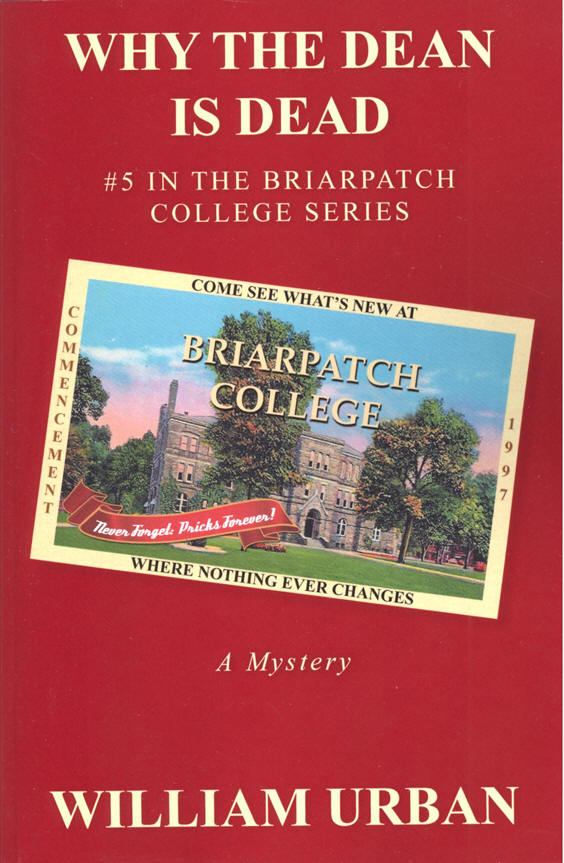 .
.
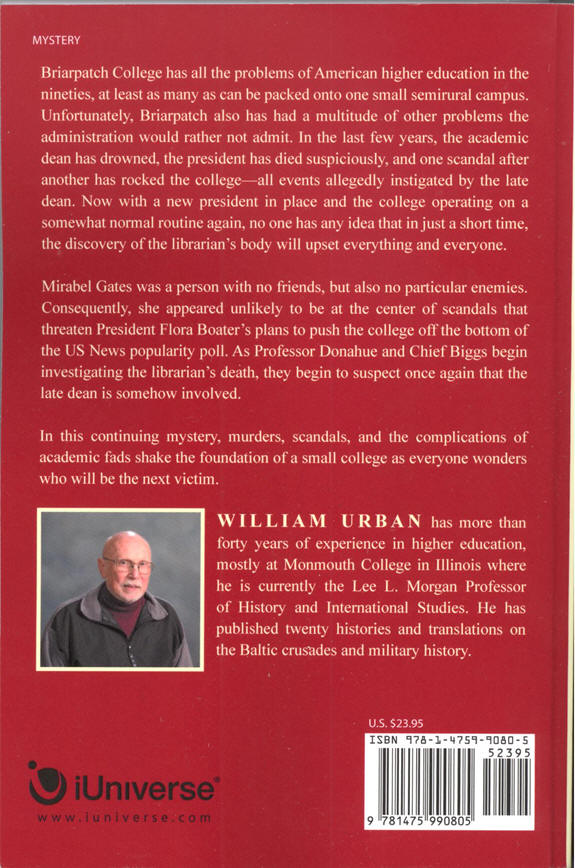
William Urban is often asked where he gets his ideas. He always answers that he just looks around, reads the Chronicle of Higher Education, and shares beers with colleagues at conferences. Insanity abounds!
Matchlocks to Flintlocks (2011)
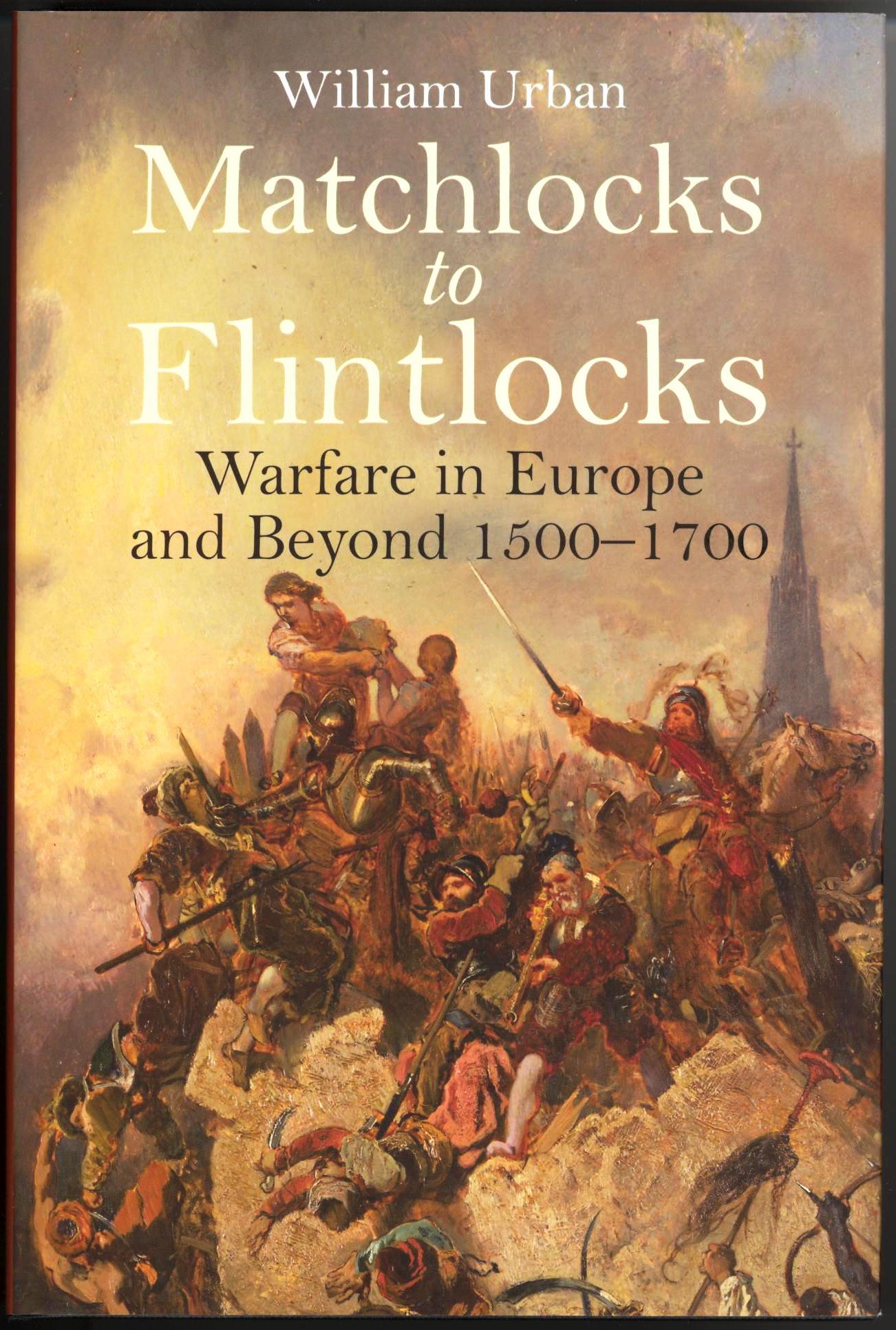 Publicity
blurb
Matchlocks to Flintlocks
Publicity
blurb
Matchlocks to Flintlocks
Historians have long explained this development the work of absolute
rulers. Yes, there were powerful rulers, but they imposed their will less by
tyrannical methods than a combination of persuasion, compromise, bribery, and
flattery; the iron fist is most effective when clad in a silk glove.
This was not an era that would attract a time-traveler, but it was
never dull. Christendom, fractured by quarrels among Catholics, Protestants
and Orthodoxy, faced invasions by Muslim Turks and Tatars. The West was on the
defensive until just before 1700, with several crises having been barely
survived until the decisive encounter at Vienna in 1683. The subsequent
struggle over Budapest, then the Christian drive down the Danube intended to
liberate the peoples of the Balkans demonstrated that the future belonged to
the West, not the traditional empires of the East.
Louis XIV’s attacks across the Rhine into Germany and Holland ended the
Austrian effort to drive the Turks out of Europe, leaving the way open for
Peter the Great to advance Russia’s borders far to the south.
This is military history in social, economic and political contexts.
Urban’s well-known light touch is in evidence, but readers will also benefit
from his insights into the contributions of leading scholars of military
history.
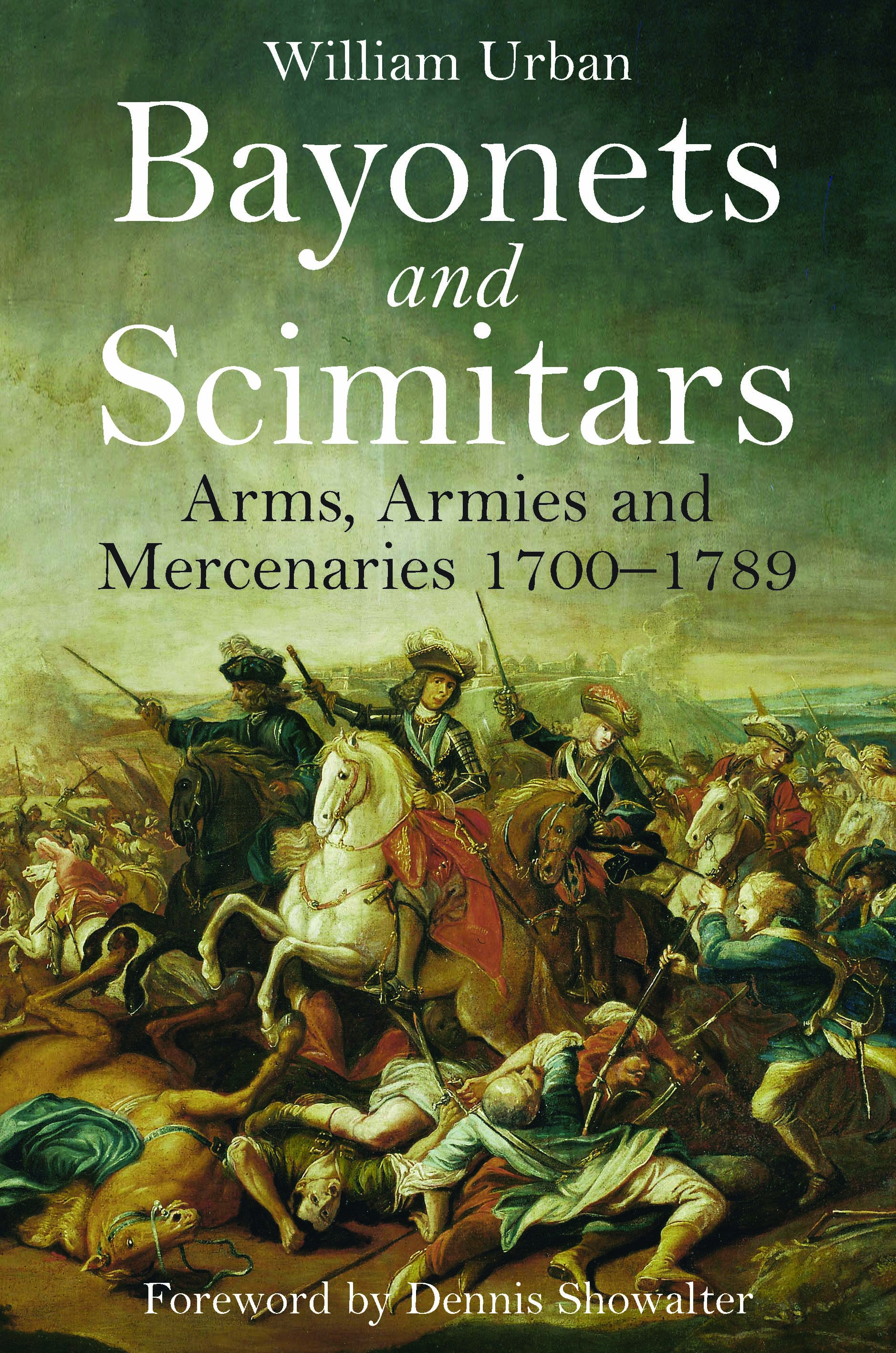
Small Wars and their Influence on Nation States: 1500 to the PresentHardcover – March 30, 2016
 After
1500, European warfare was repeatedly revolutionized by new weapons, new
methods for supplying armies in the field, improved fortifications and new
tactics for taking fortifications. This allowed empires to grow, with, for
example, the Ottomans expanding into the Middle East and Africa, Britain
dominating India, and Russia conquering the steppe.
After
1500, European warfare was repeatedly revolutionized by new weapons, new
methods for supplying armies in the field, improved fortifications and new
tactics for taking fortifications. This allowed empires to grow, with, for
example, the Ottomans expanding into the Middle East and Africa, Britain
dominating India, and Russia conquering the steppe.
The dynamics of resistance to this expansion were remarkably similar to what
we see today in ISIS, Afghan and Pakistani Talibans, and various jihadist
groups that are more tribal than Islamist. The driving force behind these
organizations may be tribal resentment of the modern world undermining
long-established traditions and beliefs. Religion – or their interpretation of
Islam – is merely a glue that holds the rebels together.
Such resistance continues to be met by world powers who misunderstand the
motives of the people that take up arms against them, and we should understand
that ours is not the first generation to deal with this problem, and ours will
probably not be the last. However, there are some methods that work better
than others. The failures and successes of the past can help us now and in the
future
Chapter 1 Every Periphery Has a Centre
Chapter 2 Gunpowder Regimes
Chapter 3 The Frontiers of Christendom
Chapter 4 Africa, the Ultimate Periphery
Chapter 5 The Collapse of Old Empires
Chapter 6 Scotland and Ireland
Chapter 7 The New Armies
Chapter 8 Britain in America
Chapter 9 Central Asia, the Periphery of Empires
Chapter 10 Mercenaries in Literature
Chapter 11 Peripheries Are Not Always Distant
Chapter 12 Reflections on the Writing of History
Time seems to bear out my contention that tribalism is more important than religion, though when combined their power is greater than the sum of their parts.
Published in November 2018:
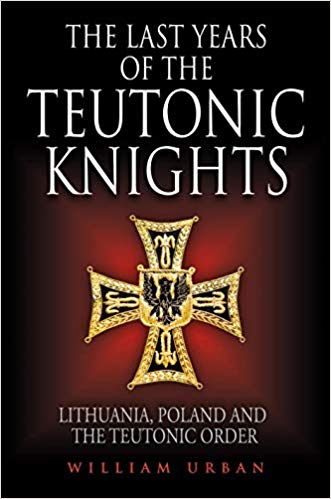
The Battle of Grunwald (Tannenberg, Žalgris) was
one of the largest battles in Medieval Europe and was the most important in
the histories of Poland and Lithuania.
It was fought on 15 July 1410
during the Polish-Lithuania-Teutonic War between the alliance of the Kingdom
of Poland (led by King Jagiello) and the Grand Duchy of Lithuania (led by
Grand Duke Vytautas) against the German-Prussian Teutonic Knights (led by
Grand Master Ulrich von Jungingen) and with the assistance of Sigismund, then
King of Hungary and Croatia.
The Teutonic Knights, a crusading military
order, were defeated and most of their leaders were killed or taken prisoner.
This defeat would mark the beginning of their decline and they would never
again regain their former power.
Following the battle, the balance of
power shifted in Central and Eastern Europe and so came the rise of the
Polish-Lithuanian union as the dominant political and military force.
In this compelling account the action takes place in Lithuania, Poland, the
Czech Republic, Hungary, Russia and Germany. There are bloody battles;
fascinating characters; intrigue; betrayals; sex; unexpected twists of fate;
religious heresy and a smattering of saints. There is also the monumental end
of one era making way for the beginning of another.

